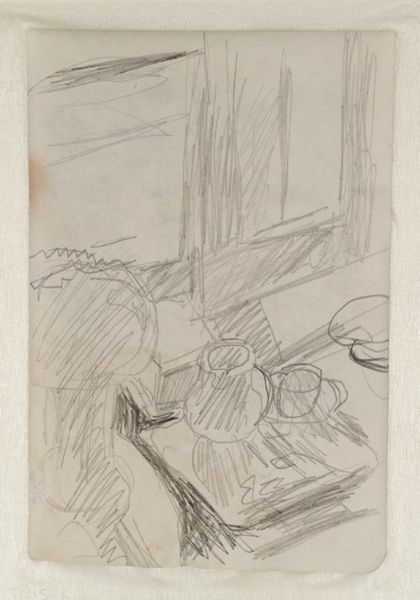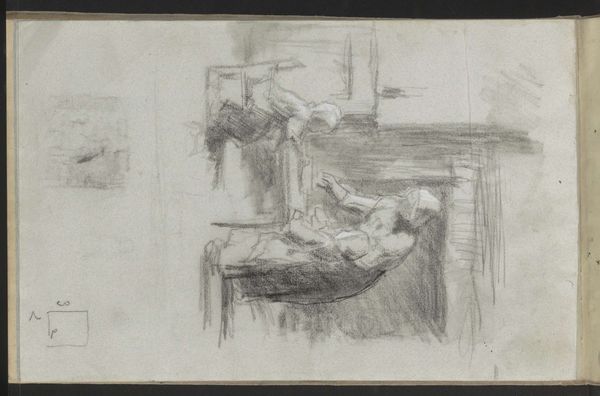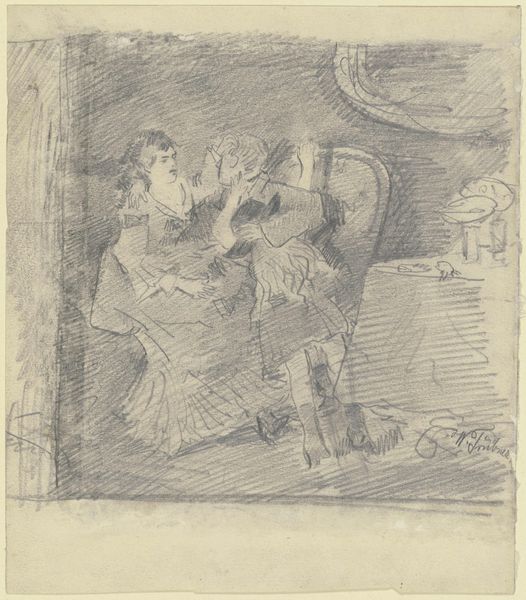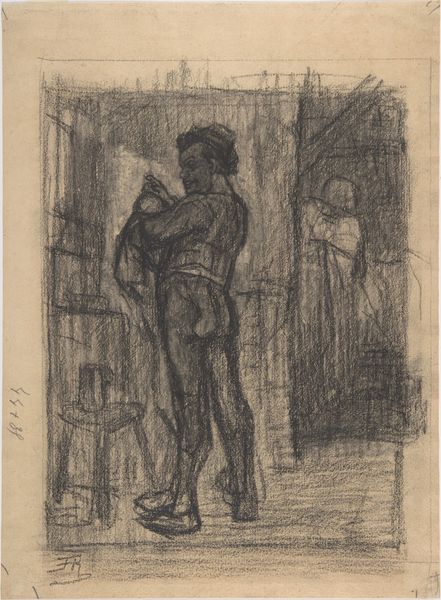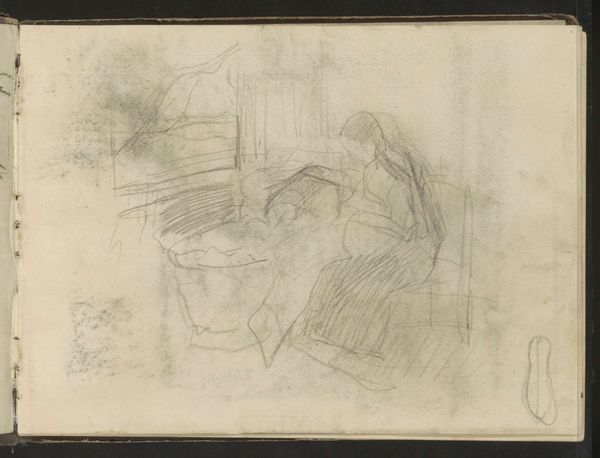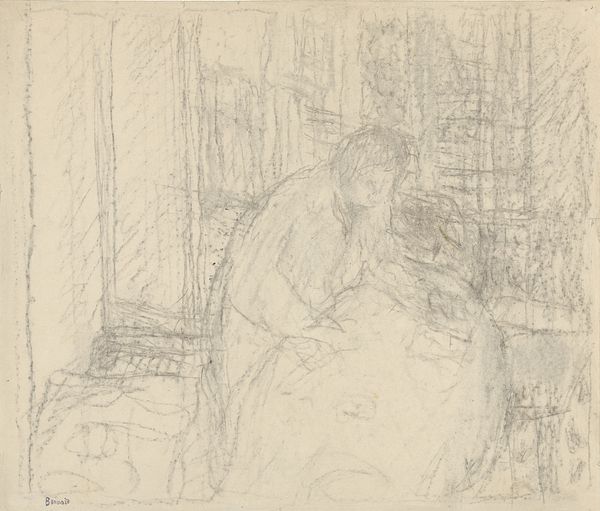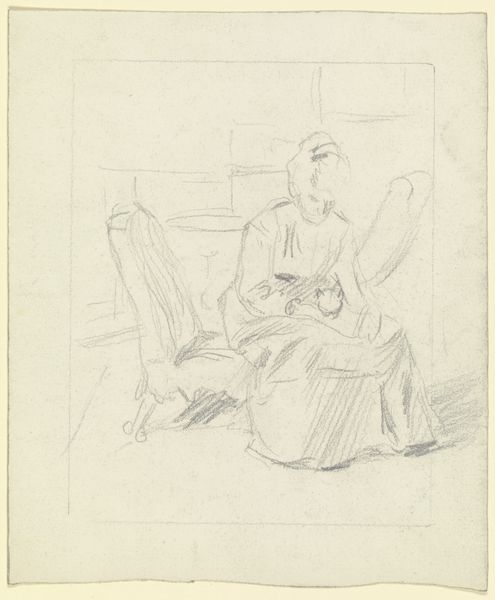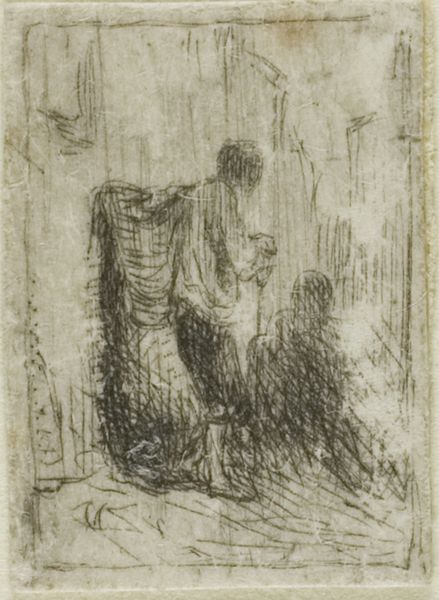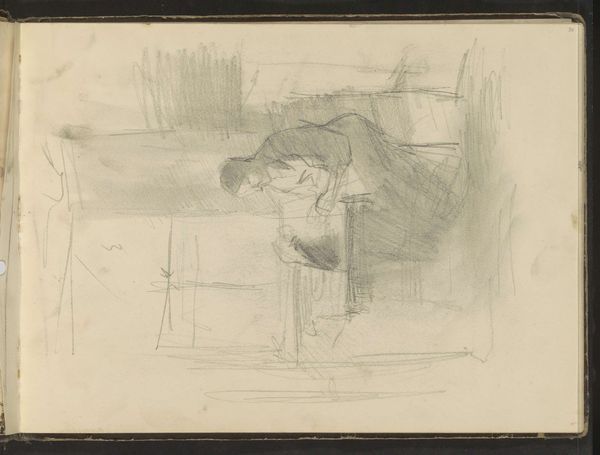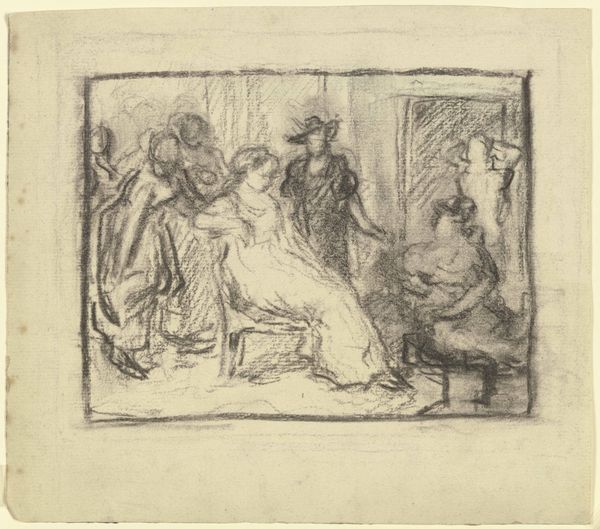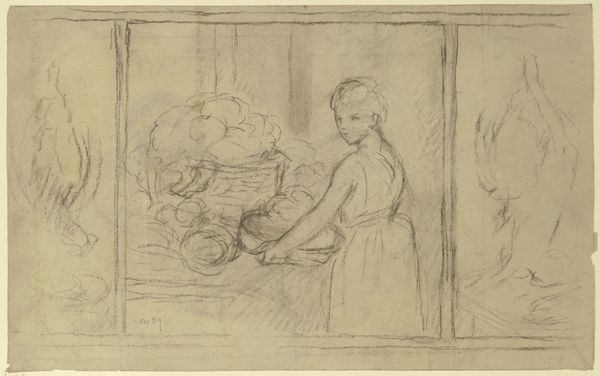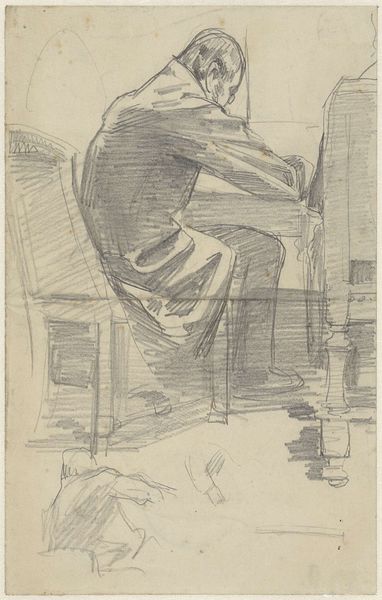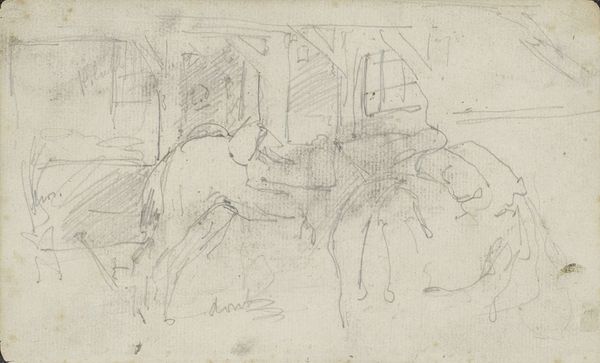
drawing, ink, pen
#
drawing
#
amateur sketch
#
toned paper
#
light pencil work
#
narrative-art
#
baroque
#
pencil sketch
#
figuration
#
personal sketchbook
#
ink
#
ink drawing experimentation
#
detailed observational sketch
#
pen-ink sketch
#
sketchbook drawing
#
pen
#
genre-painting
#
nude
#
sketchbook art
Dimensions: height 193 mm, width 199 mm
Copyright: Rijks Museum: Open Domain
Curator: Here we have a pen and ink drawing from after 1650, titled "Cimon and Pero". Though we don't know the artist, the scene captures a fairly famous narrative. Editor: Well, before we dive into the story behind it, the first thing that strikes me is the…rawness? It feels like a peek into someone's personal sketchbook, like finding a half-forgotten thought rendered in hurried strokes. There is almost an intimacy about it. Curator: Exactly! That immediate feel likely speaks to the purpose this drawing would have served: perhaps preparatory for a painting or simply as an exercise to engage with existing versions of this popular story. "Cimon and Pero" tells of a woman, Pero, who secretly breastfeeds her imprisoned and starving father, Cimon, who has been condemned to death. This act of self-sacrifice eventually moves the authorities to release him. Editor: Talk about dedication! The light pencil work makes it seem so vulnerable, almost like a confession on toned paper. There’s that face in the background as well. The bars…they evoke the prison bars while almost appearing to be part of the composition. Curator: The popularity of the story of "Cimon and Pero" says a lot about the values of the period: familial piety, sacrifice, the feminine capacity for mercy, all circulating at various levels of society through images and printed stories. Editor: It also has echoes in classical antiquity… the 'Roman Charity' motif that emphasizes themes of familial devotion but questions patriarchal constructs as well…that in the most crucial of times, woman subverts what is "expected". I find myself drawn into considering its emotional nuances…a meditation on desperation, maybe. Curator: The distribution of such images had political ramifications too, by reaffirming dominant norms that served specific social and political agendas and structures. Editor: Mmm…I wonder about its legacy, how the image and the story continued to appear and get reworked, becoming, as they do, signposts or ways of expressing defiance during challenging eras of injustice. Curator: Absolutely! The staying power of this narrative shows how adaptable these core stories are to socio-political needs and expectations. Editor: Ultimately, beyond history or cultural interpretations, I think "Cimon and Pero" manages to touch on some universal ideas around human resilience.
Comments
No comments
Be the first to comment and join the conversation on the ultimate creative platform.

